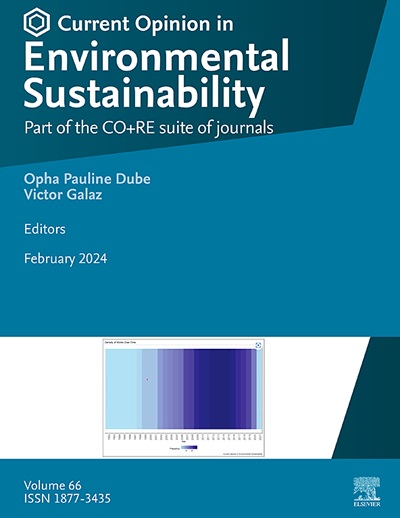生物多样性需求和供给之间的差距影响着南半球的金融
IF 6.3
2区 环境科学与生态学
Q1 ENVIRONMENTAL SCIENCES
Current Opinion in Environmental Sustainability
Pub Date : 2025-08-25
DOI:10.1016/j.cosust.2025.101568
引用次数: 0
摘要
本报告旨在填补以下方面的知识空白:现有何种生物多样性影响投资模式、制约全球发展中国家生物多样性影响融资的因素以及可以采取哪些措施来弥补这一空白。该报告指出,复杂性、交易成本高、对产品不熟悉以及缺乏可融资项目是金融部门面临的主要挑战。在投资者方面,担忧往往围绕着风险回报率、全球生物多样性数据不足以及缺乏定义生物多样性金融的国际框架。在被投资方方面,人们担心过去的权力失衡会影响到这些新产品,这可能是有害的,尤其是在拥有非正式土地权的地区。为推进这一进程,可以向利益攸关方提供影响力金融方面的学习平台和培训机会,并需要更多资源来通过混合融资方式降低投资风险。本文章由计算机程序翻译,如有差异,请以英文原文为准。
Gaps between demand and supply of biodiversity impact finance in the Global South
This contribution seeks to fill knowledge gaps on what kinds of biodiversity impact investment models already exist, what factors are constraining biodiversity impact finance in the Global South, and what could be done to bridge the gap. The review identifies complexity, high transaction costs, unfamiliarity with the product, and shortages of bankable projects as key challenges pertaining to the financial sector. On the investors’ side, concerns often revolve around the risk–return ratio, insufficient global biodiversity data, and the lack of an international framework defining biodiversity finance. On the investees’ side, there is anxiety over power imbalances from the past finding their way into these new products, which could be detrimental, especially in areas with informal land rights. To move forward, learning platforms and training opportunities on impact finance could be provided to stakeholders, and more resources are needed for de-risking investments through blended financing approaches.
求助全文
通过发布文献求助,成功后即可免费获取论文全文。
去求助
来源期刊

Current Opinion in Environmental Sustainability
ENVIRONMENTAL SCIENCES-ENVIRONMENTAL SCIENCES
CiteScore
13.80
自引率
2.80%
发文量
52
审稿时长
6-12 weeks
期刊介绍:
"Current Opinion in Environmental Sustainability (COSUST)" is a distinguished journal within Elsevier's esteemed scientific publishing portfolio, known for its dedication to high-quality, reproducible research. Launched in 2010, COSUST is a part of the Current Opinion and Research (CO+RE) suite, which is recognized for its editorial excellence and global impact. The journal specializes in peer-reviewed, concise, and timely short reviews that provide a synthesis of recent literature, emerging topics, innovations, and perspectives in the field of environmental sustainability.
 求助内容:
求助内容: 应助结果提醒方式:
应助结果提醒方式:


